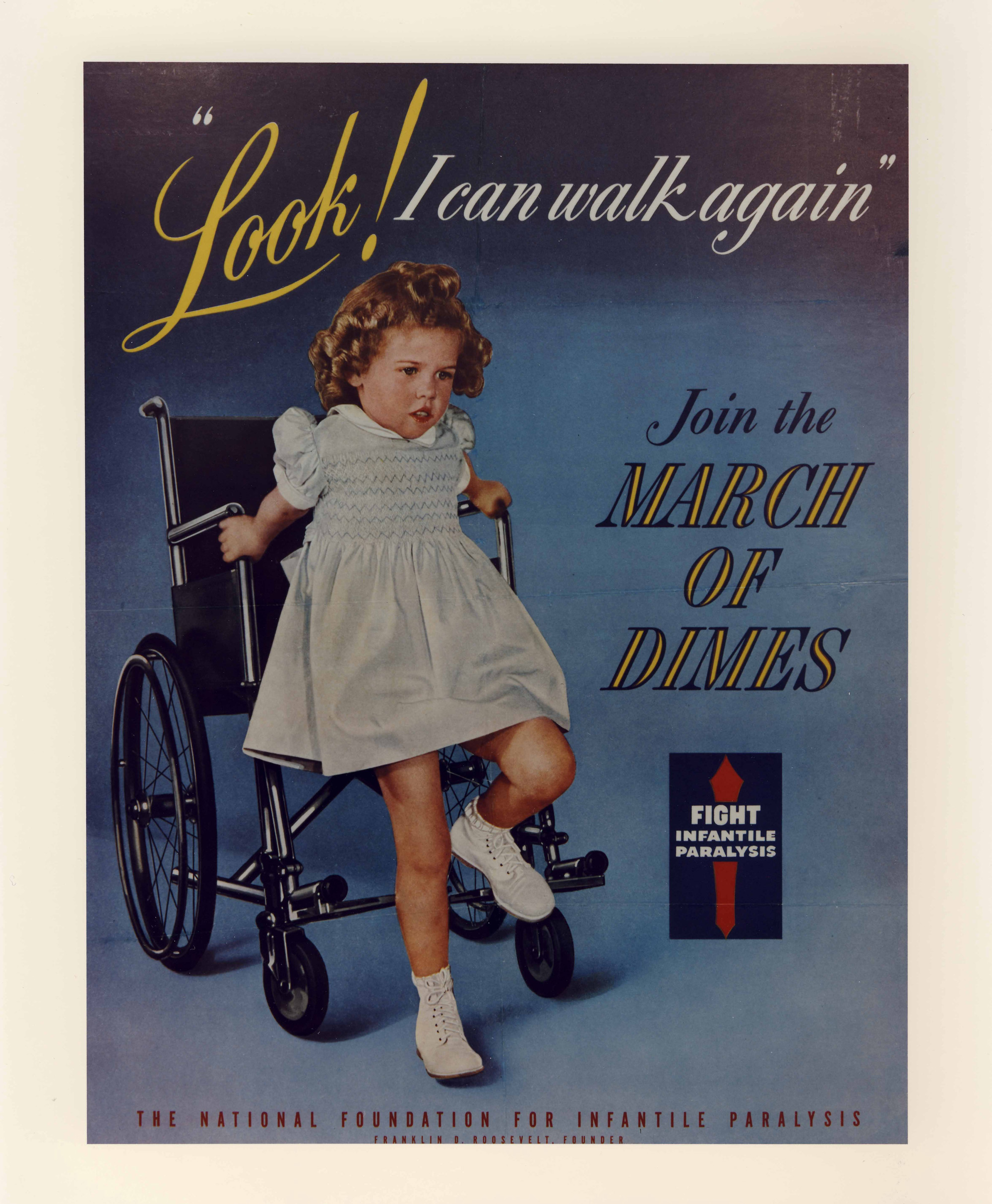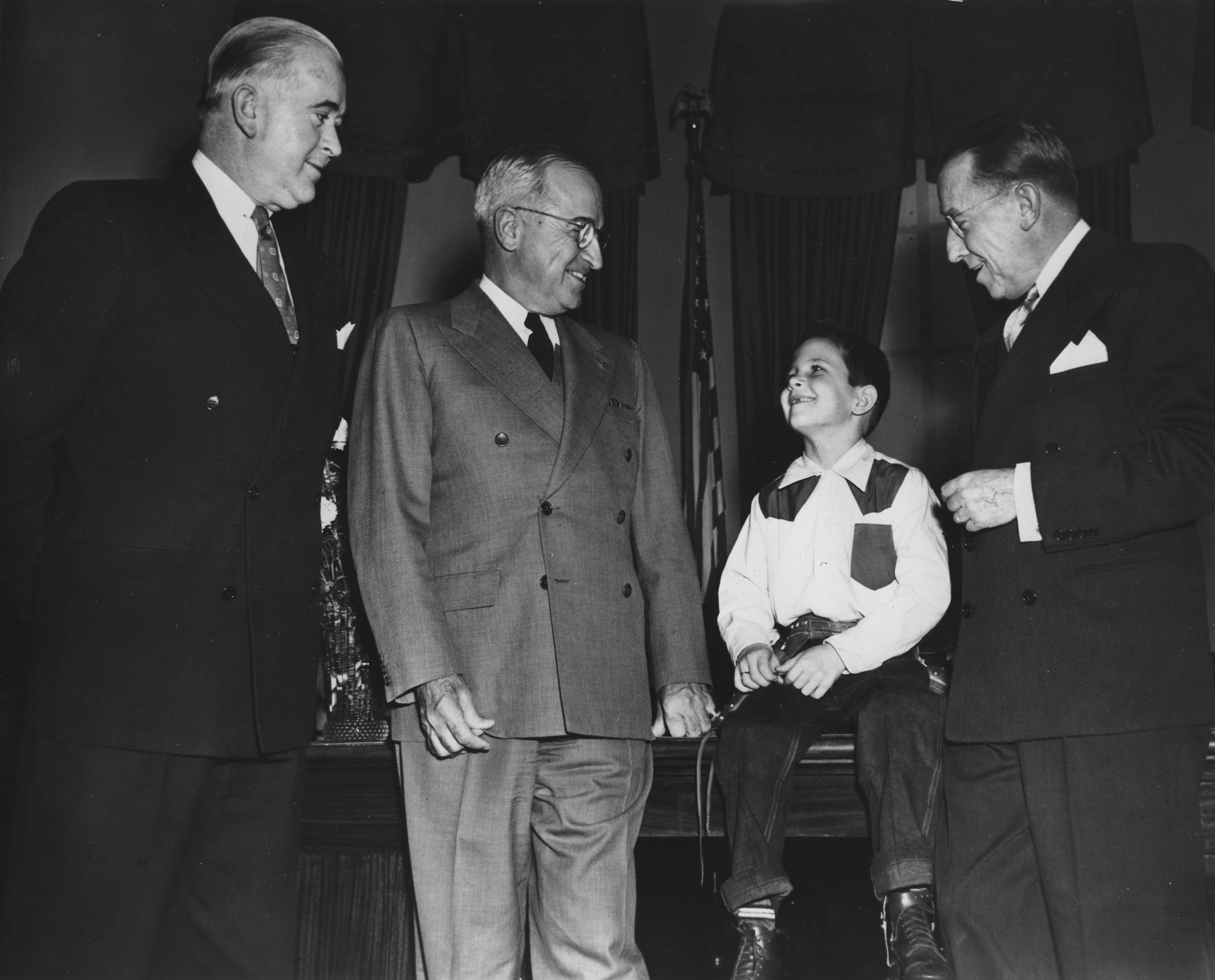In the mid-twentieth century, the National Foundation for Infantile Paralysis (the predecessor to today’s March of Dimes) pioneered a new approach to philanthropy, raising money a dime at a time from millions of small donors. The nonprofit enlisted poster children, celebrities, presidents, and other partners in their high-profile campaigns.
By 1954, the National Foundation was the nation’s leading health charity, capturing nearly half of all charitable donations to those causes. However, with 100,000 cases per year, polio was a smaller public health threat than tuberculosis, heart disease, cancer, cerebal palsy, or muscular dystrophy.
-

Stricken with polio himself, Franklin D. Roosevelt founded the nonprofit Georgia Warm Springs Foundation where patients like Mary Frances Jasper could benefit from the therapeutic effects of natural springs. (1932)
Credit: March of Dimes Foundation -

A volunteer collects a donation from a bus driver, 1952. The National Foundation for Infantile Paralysis, as it was then known, initiated the first March of Dimes campaign in 1938.
Credit: March of Dimes Foundation -

A man helps his child mail their donation of dimes. Playing on a popular newsreel called “The March of Time,” celebrity comedian Eddie Cantor coined the phrase “March of Dimes” on his radio program, asking Americans to send dimes to the White House to support the fight against polio.
Credit: March of Dimes Foundation -

President Franklin Roosevelt and his former law partner Basil O’Connor founded the March of Dimes in 1938. In this publicity photo, they count dimes sent to the White House by ordinary Americans.
Credit: March of Dimes Foundation -

Two patients are treated in full-body respirators called iron lungs. This was an essential treatment for patients whose respiratory muscles became paralyzed. The March of Dimes used photos like this one to show the public the difficult lives of many who contracted polio.
Credit: March of Dimes Foundation -

A young polio-stricken boy examines his reflection as he learns to walk on crutches. Between 1952 and 1953, a record 93,000 cases of polio were reported and “polio hysteria” gripped the country.
Credit: March of Dimes Foundation -

Many Americans believed incorrectly that African Americans were less susceptible to polio than Caucasians. Though the March of Dimes sponsored a large polio unit at the Tuskegee Institute in Alabama “for the colored race,” African Americans elsewhere – including in the segregated South – sometimes had to travel far for adequate care.
Credit: March of Dimes Foundation -

March of Dimes poster child Linda Brown in a 1949 ad campaign. The non-profit kept images of polio’s victims – and their successes in treatment – in the public eye.
Credit: March of Dimes Foundation -

Actress Grace Kelly distributes materials to Philadelphia Mothers’ March leaders. In the early Fifties, Mothers’ Marches raised $250 million with door-to-door collections organized by local women. Citizens interested in donating were asked to turn on their porch lights at 7 pm.
Credit: March of Dimes Foundation -

Hollywood star Joan Crawford holds a poster of the polio-stricken President Roosevelt. The March of Dimes deployed celebrities like Crawford, and continued to use the image of Franklin Roosevelt after his death to raise awareness and funds.
Credit: March of Dimes Foundation -

In 1952, during the Korean War, the March of Dimes aimed their pitch at American patriotism. Fundraisers used military metaphors: people could relate to language like “war,” “fight,” and “struggle.”
Credit: March of Dimes Foundation -

The March of Dimes used promotional tools like this “flying air lung model” to get Americans to donate. This particular replica was launched on a 10,000-mile air tour of the US, raising money in 20 cities in 1953.
Credit: March of Dimes Foundation -

A 1954 March of Dimes poster shows everybody joining the effort to fight polio, including cartoon characters Popeye and Snuffy Smith.
Credit: March of Dimes Foundation -

In Wichita, Kansas, Boeing employees attach a dollar bill to the body of their 1,000th B-47 Stratojet, publicizing the fight against polio.
Credit: March of Dimes Foundation -

The annual President’s Birthday Ball – celebrated on President Roosevelt’s birthday – was a major polio research fundraiser that usually included President Roosevelt and a variety of celebrities. In this picture Eleanor cuts the cake while Lucille Ball and comedian Red Skelton look on.
Credit: March of Dimes Foundation -

March of Dimes president Basil O’Connor poses (right to left) with 1952 poster child Larry Gross and President Harry Truman. Also pictured at left is Washington, DC commissioner Joseph Donahue.
Credit: March of Dimes Foundation -

In 1953 Dr. Jonas Salk developed a controversial killed-virus vaccine. He displayed his confidence in it by vaccinating his family during the trial stage. It would be replaced in the U.S. by the oral Sabin vaccine in 1962, but later came back into use.
Credit: March of Dimes Foundation -

Emerging country music star Johnny Cash joins the fight against polio, posing with his guitar for a March of Dimes fundraiser.
Credit: March of Dimes Foundation -

Wearing a March of Dimes pin, actress Marilyn Monroe encourages Americans to take the polio vaccine. Monroe and baseball star Joe DiMaggio were one of the biggest celebrity couples of the Fifties.
Credit: March of Dimes Foundation







